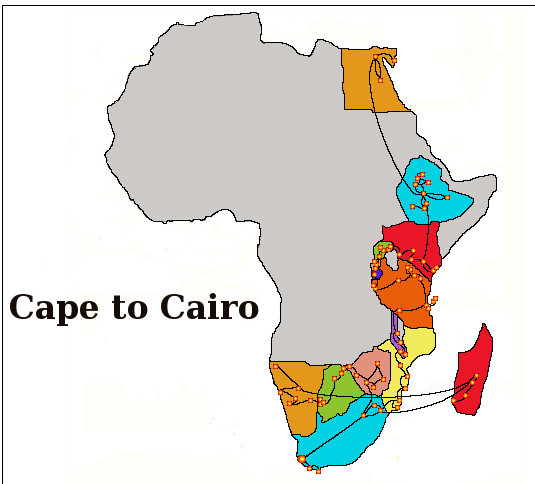Ethiopia:
The land of people with extreme egos and who refused to be colonized
If you ever decide to come to Ethiopia, you will most likely spend a few days in the Capital city of Addis Ababa. It is the only place where you can fly into or out of on an international flight and it is a typical yet very interesting African city to say the least. Addis Ababa is a sprawling high altitude settlement resembling a vast rusty roofed village scattered over many hills. It is over 100 years old but has a look of timeless decay. Good from far but far from good, Addis is unsuspecting from a distance, but up close it is dirty, dusty and falling apart in more ways than one. Stinking horribly of unwashed homeless people, sick animals, creepy people everywhere, walls reeking of urine, and every alley blocked with garbage. Overwhelming to say the least, we found it hard to find any reason to recommend this city to others as it lacks any serious charm. Loud music, car horns, diesel fumes, and pestering urchins yelling “farangi” (white man) with sad stories and insinuating fingers and dire warnings such as “Be careful where you go as there are bad people here”.
One of the things that you will most likely encounter on your journey to Ethiopia is a run in with their national food. For the typical Ethiopian, Injera is a staple food that is consumed everyday from childbirth till the day they die. Most of the people in this country are very religious and have great pride. They believe that they are the soul of religion in Africa and the originators of African existence. During certain times of the year, most Ethiopians take part in a month long fast to show their devotion to their religion. During this time, Ethiopians drink no milk, consume no meat or fish and they eat only “fasting food”. In short, this consists of mashed vegetables mounded on injera, which is a layer of grey spongy bread made from fermented grain and spread over a large platter. “Like a crepe or a pancake”, people say but no: it is a cool, moist, and rubbery, less like a crepe than an old damp bathmat. Spicy sauces called wot are placed on the injera at intervals, with pulped beans, lentils, cabbage, potatoes, carrots, tomatoes, or, in non fasting months, fish or meat. Every traveler who comes here must experience the wonder of such local food as injera, but will be reassured that pasta and sauce or other western foods are also usually available in most restaurants in the country.
Another unique aspect of Ethiopian culture is their music and their juice and coffee. The music is a high-pitched shriek like squeal of clapping, dancing, and accordion like sounds. The dancing has to be some of the most bizarre moves on our planet and the most common movements you will see is the man spastically vibrating their shoulders while dancing on one leg as if they are having a seizure, and the women dancers are often seen wearing a garment like a bath rob and jumping up and down while thrusting their chest in the air and twitching their necks. We thought it would be a nice souvenir to bring back a music video DVD just to show others back home just how wild and wooly an African dance can get. On the other hand, Ethiopian coffee is the heart or focal point of this country. Renouned as having the worlds best coffee, once you drink a cup, it will leave you begging for more. Part of the reason it is so good is that coffee production originated right here in Ethiopia. They are the master minds behind the ever so delicious roasted coffee beans that people all over the world take time to enjoy. To add to the specialty, during the late 19th century the country was run over by Italians and they left a legacy with their own twist. Whither its Traditional coffee made fresh for you in a coffee ceremony, or a macchiato brewed fresh from an espresso machine, you might quickly find your taste buds craving for more with each passing day. To come to Ethiopia and not get to experience “the juice” would be a shameful disappointment. The juice is often available at cafes and comes mostly in the flavors of orange, mango, guava, avocado, or pineapple. What you will find is most locals or people in these cafes are ordering a “mix” of all the flavors available and it is a total mouth watering spectacle that is an absolute must.
So there you have it! The bare bones of Ethiopia in a nutshell. I would never discourage anyone from coming here but I would only recommend it to experienced travelers who want to get a taste of the real, the raw, and the gritty side of the struggle within the African way of life and their culture. The harshness and overbearing characteristic of many of the local people here in this country will most likely leave the inexperienced travelers pleading to jump back on a plane back to their home country. For the majority of travelers that want to experience Africa I’d probably recommend the other 12 countries I’ve spent time in before recommending this one, as they are a lot less overbearing and more rewarding.








